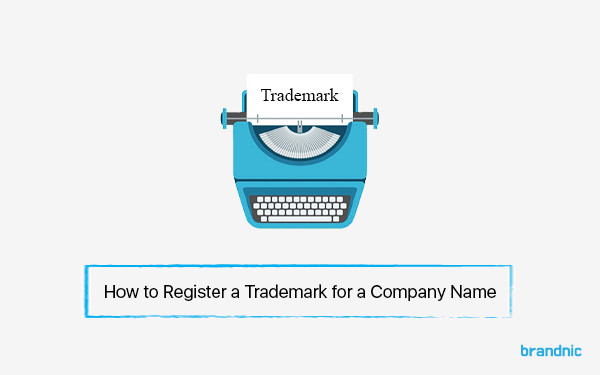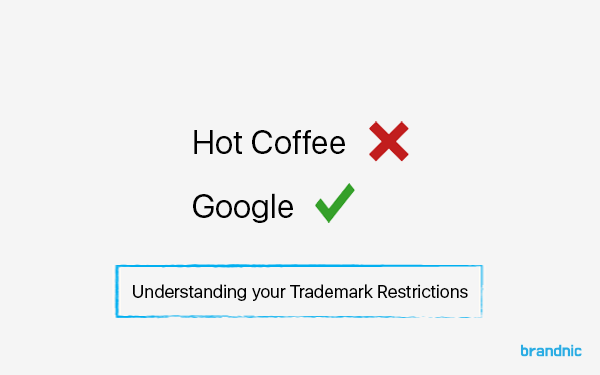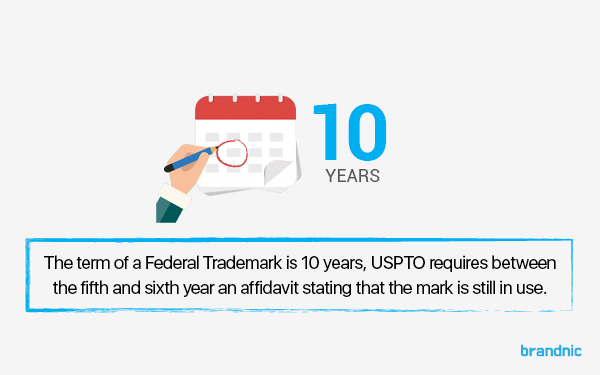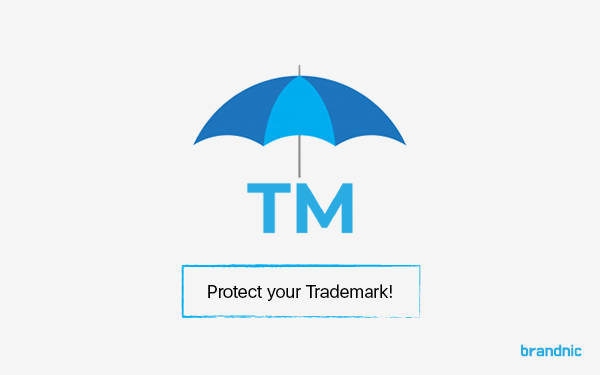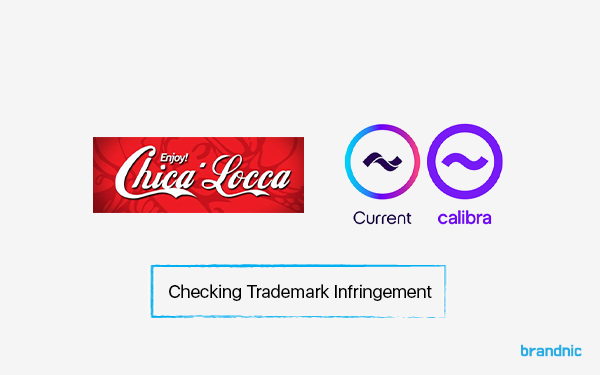Read Time: 12 minutes
Table of Contents
1. Choosing a Trademark
2. Why should you trademark your business name?
3. Recognizing Trademark Name Restrictions
4. How to trademark a business name?
5. For how long a trademark lasts?
6. What to do when someone trademarked your business name?
7. To Wrap it all
Who holds the trademark name, ‘Apple,’ is it the Beatles or Apple?
Well, technically Beatles came up with ‘Apple Corps,’ and after 8 years, Steve Jobs created ‘Apple Inc.’ The two mega giants are in battle since.
Can you even imagine the word ‘Apple’ being a trademark? Apple paid a large settlement to the Beatles for their trademark. But after the launch of iTunes, the trademark battle was heated up again and got settled by Apple Corporation losing the case and Apple Inc. gaining control over the trademark.
Someone wise once said that prevention is better than cure. So, if you are planning to launch a music company or any food company, I would suggest that you avoid the word ‘Apple’ and use some other fruit instead.
But you might be asking how to trademark a company name?
That is a quick question to ask. Let’s get straight to it.
Choosing a Trademark
In the United States, there are two types of Trademarks.

Two types of trademarks.
The first one (™) can be used by anyone.
If a conflict arises in the use of the mark, it is resolved legally, and the earliest party wins the case. The trademark is acquired by the United States Patent and Trademark office.
The second trademark is a registered trademark (®)
This means that no one can use the process of the company, and to deal with this, it is good to take some legal advice before you use any trademark.
Why should you trademark your business name?
2012 was a special year for Beyoncé and Jay-Z. Their daughter, Blue Ivy Carter, was born with a silver spoon in her mouth. The parents applied their daughter’s name. Wait. What? You might be thinking, can a baby name be trademarked? Well, it did with Jay-Z and Beyoncé because they planned to launch a product line by their baby’s name.
When a baby can have her name as a trademark, what is the reason that your business doesn’t need one?
What does it mean to trademark your name? Does it matter in the long haul? How will you benefit from it? These are just a few questions that can force you to register a trademark for your brand.
There are many trademark cases still waiting for a verdict in court. You are not planning to end in court.
There are a few reasons that can help you understand the importance of trademark and why your business needs a trademark?
- A trademark reveals the emotional connection that a brand has with its values, mission, and people. When a business trademark a name, it is more like naming your baby. When you name your baby, you establish a deeper connection with that baby.
- In a highly crowded digital space, a trademark makes it easy for customers to find you.
- Trademark is an asset in disguise. When you trademark a business, it means that the company has more opportunities to expand from one industry to another without affecting the core brand. Furthermore, it gives more giant corporations to acquire your brand without feeling worried about any trademark sue.
- Businesses who trademark their brand shows how serious a business is for their brand. This emits positive energy to the existing employees and even attract new employees who are willing to get associated with something personal.
Brands are a critical asset, which is why trademark a name is significant for a new business or even for older ones.

Secure your digital asset.
I’ve been around successful entrepreneurs, and some of them failed massively at some point. But, during their business life, all of them asked this question more than once, do I need to trademark my business name? As easy as it sounds, it is a hard choice to make.
Another question that bothers startups is, do I need to trademark my business name and logo?
The simple answer to both the questions is yes. If you are serious about scaling your business. If you believe that one day, you’ll create a brand worth talking about, then you must begin by filing a trademark application for your business.
Recognizing Trademark Name Restrictions
The trademark will give you an exclusive right to use words, phrases, and symbols in your business that will become the identity of your business. In short, you must be careful what phrases you trademark because they will become your identity in the future.
To learn how to trademark a slogan – read our in-depth guide on it.
When Beyoncé filed a trademark for the Blue Ivy trademark, it was allowed easily because the parents intended to use the name for personal reasons. They were planning to sell baby-related products. So, Beyoncé prevented other people from using her daughter’s name to sell anything.
One thing to remember here is that you trademark a name for the protection it must be unique. A generic title like “Hot Coffee” or “Tom” might not be qualified for being a trademark. When “Blue Ivy” is used as a brand name, it gives it meaning. Just like Apple is for computers, Blue Ivy will become a brand name for baby-products or whatever brand the parents are willing to start.

Understanding the concept of trademark restrictions.
A trademark will increase its value. Moreover, names like “Google” or “Microsoft” are made-up of suggestive names that define the qualities of the product or service that they are associated with.
When applying, it is necessary that you trademark something that doesn’t create even a binge of confusion. You might consider every possibility that there is no product or service related to your brand name.
Every trademark application must provide full details about the products/services that will be offered within the brand name. Confusion often arises when similar marks are used on related goods, and customers find it hard to identify the difference. It is hard to start, but with a bit of research in the market, you’ll be able to come up with a unique trademark name that won’t be copied or used in any case.
How to trademark a business name?
To trademark your business, you can use the following steps:
Step 1: Figure out the type of trademark
The first step that you need to do is to find a brand name for your business.
To ensure that your trademark fits on the US Patent & Trademark Office (USPTO). The trademark must be non-intuitive, which means there should be no double meaning for the trademark.
The USPTO divides marks into four categories that will determine the strength of your trademark. From weaker to the strongest, you’ll in which category your trademark will exist.

Preparing your name for a trademark.
This is the most reliable type of trademark. There is an insignificant chance that a company or an individual will use this trademark. This comprises of made-up words and also words that are not associated with any product or business. For instance, if you have a shoe company, “Brontox” can be a unique name that you can use. It is fancy and unique at the same time, and there is no chance that anyone will be using this type of name.
As the name itself suggests, this kind of trademark is used to describe specific traits of the service or the product. The trademark type is not as strong as a fancy trademark, but still, you can get suggestive mark easily as it will be relevant to your business. A good example might be using “Bright & Soft” as a tagline for a t-shirt company.
This is considered a weak mark. There is a chance that other people are already using the trademark that you plan to use. So, it will take some hit and try to get a trademark that you want to use. One of the most straightforward examples for this mark is a cleaning service using “Wash & Scrub with ease.”
It’s nearly impossible to trademark anything that lies in this category. These types of trademarks are often used commonly in conversations, so it is impossible to enforce any trademark on such words. For example, if you try to name a company “Lantern,” it would be difficult to trademark it as it is generic.
Step 2: Search if the trademark already exists
You can use the Trademark Electronic Search System, TESS, to search in the trademark database. You’ll be able to search if your desired trademark is available or not.
Step 3: Fill the Trademark application
In the next step, you have to fill the form online from the USPTO website.
If you were doing it for the first time, you could start by reading trademark basics, which will give you a vague idea about the requirement and which type of trademark you need for your business.
Step 4: Paying the Fee
Depending upon the type of your business, you’ll be required to pay a fee for your trademark. Check out the basic fee structure, which will help you decide better.
Step 5: After filling the application
Once you’ve applied, there are a few things that you must note.
- It can take several months before you get anything from USPTO.
- You should monitor the TESS database, which will help to inform you about the progress of your application.
- You will get either “Allowed” or “Published for the opposition” from USPTO.
Step 6: Respond quickly to USPTO
The USPTO will review your application and contact you if you correct your errors or if your application is not approved. Once you get the reply, you must respond to USPTO fast. Don’t be disheartened if the application gets rejected the first time. At times the examiners at USPTO make mistakes, or they are just looking for some more clarification from your side. If you can, it would be good to hire an attorney who can help you to send an excellent reply to USPTO.
Step 7: Administer your trademark
You might learn how to trademark a company name and apply everything in your hand to keep it that way. But USPTO will not enforce trademark, other than just preventing other people from using your brand name.
Once your trademark is approved, it is your responsibility to take legal action if you see that someone is using your trademark. If you don’t enforce the trademark and other people start using it, your trademark can lead to the “Generic” category, which means that you might lose the trademark.
For how long a trademark lasts?
You might ask, how long does the trademark last? Well, to keep your trademark intact, you just need to do some additional USPTO filings.
Initially, your trademark will last for five years; then, you will have to renew after ten years.
As mentioned earlier and it is worth repeating it here again. You must keep checking the TESS database and the internet from time to time to spot any infringements that have been done before it gets too late.
Read more about – how to renew your trademark with a detailed explanation.

Trademark lasts for 10 years.
Ensure that you use the “circle-R” mark ® along with the trademark so that people recognize it as soon as they see it. The “circle-R” is used for products, services, or goods if you have a brand so you can use TM or ™ so that it will be clear what type of trademark you are using. Don’t use ® or ™ with the company name to identify the company or even particular goods or services that are being used with your brand.
Finally, if you would fail with renewal your trademark may become dead.
What to do when someone trademarked your business name?
Imagine you’ve worked hard to design a business name or logo or establish your branding. You can quickly stop other companies from using it.
It is a bit confusing. The trademark laws are a bit confusing, so even the smartest businessman won’t know what to do. Of course, USPTO has various tutorials, FAQs, and guides that can help you to move forward with trademark infringement; some tips can help you do things efficiently.

Protecting your business.
The following steps will turn the process less stressful and painful for you. You might go through these tips, but if you don’t know or understand anything about trademark infringement, it is highly recommended to hire an attorney.
But with the following steps, I hope that some pain with go away, and you’ll not use common names like zippers, aspiring, or even escalators, which might be trademarked names of the brands.
Step 1: Is it a Trademark Infringement?
Before you get angry and jump into a lawsuit, it is wise to know that if the problem exists or not. Let us review some facts that will clear your mind, and then you can discuss with your attorney if you still plan to file a lawsuit.

Checking trademark infringement.
- First, the trademark infringement will occur when the consumer gets confused among the use of the trademark, whether it is being used for multiple goods or products. For the same reason, Delta Airlines & Delta faucets are handled separately. When you plan on designing the bathroom you will probably not in a mood to buy an airline ticket by mistake. If someone uses your trademark, is it confusing your customers?
- The next step is to consider the location. If you open a flower shop in New York and someone with the same name opens a flower shop in California, this is not an infringement at all. Because both the states have their customer database, and no one will be mixing.
- If you can scale the business on a global scale, you might be in a good position to file an infringement irrespective of the location. The most common case is an eCommerce store. There is no geographic barrier to online presence so that it can affect both the businesses in some way.
- Another thing that you must know about trademark law is the sound, sight, and meaning of the mark. So, even if you add an “s” to make it plural, that will not be sufficient to distinguish from each other. Or if you are planning to open a fast-food restaurant and making it, “McDowell’s” won’t help you to prevent it from being sued.
Step 2: Take action
If you came to know that your business name is being used by any other business or your customers are being confused because of the two names, or if you think that your name is being used in the same geographic location, you must think of taking action.
Firstly, contact and discuss it with your attorney. The attorney will help you to go through these steps smoothly:
- The first action that you must take is to send a cease and desist letter to the business that is infringing your business name and demanding them to stop using your mark. Check out this sample letter that will help you to get a good start. Just review it with an attorney before you send it to anyone.
- WHOIS the domain name and make sure that you understand the domain name.
- Id, the alleged person, doesn’t stop using your trademark, then the next step is to file a lawsuit in federal court. This will prevent further use of your mark, and you’ll get the money for additional damage. You can easily ask the court to pay you money for the damages that your brand has endured because of the infringement.
- If the dispute is regarding using a domain name, you can file a lawsuit. If you are willing to go full, you can file a complaint with ICANN’s approved dispute resolution
- The Uniform Domain Name Dispute Resolution Policy – (UDRP) is established by the Internet Corporation for Assigned Names and Numbers (ICANN) for the resolution of issues and disputes opened up against domain cybersquatting, until unless you get your brand name from Brandnic.com where you are sure that you can establish your own brand without having a fear of getting a UDRP on your business.
- You must file complaints keeping in mind the state and federal courts. You can try to use “common law” rights to an extent, but for anyone to take you seriously, you must take help from federal protection law along with USPTO. The domain name registries will demand a federal trademark so that you can easily protest someone else’s domain.
- This is why it is essential that you apply for trademark protection as soon as you launch your business, product, or even a service. Mostly, the small business owners make this mistake of not filing a trademark until it is too late. And when they realize, it becomes nearly impossible to fight for who owns the name or who was first using the name. Therefore, it is wise that you make the decision fast and trademark your product/service as soon as possible.

Try to resolve a dispute with direct negotiations.
If someone has trademarked my business name, it is wise that you try to deal it personally before going for a lawsuit. Because when you file a lawsuit, it will cost money, and your valuable time will be wasted. But, if the other party doesn’t move back, then you must file a lawsuit so that no one else can even think of using your name, service, or product for granted.
To Wrap it all
In most cases, a duplicate name won’t cause problems if they have different customer demographics. Because as mentioned earlier, both the customer market won’t get a chance to interact with each other so there will be nothing to worry about.
If you are planning to scale your business on a global scale, then it is quite necessary to trademark your company name, product, or service. When you do so the customers from every corner of the world will know that it is your brand name and only you are operating the brand. This is the typical case with eCommerce websites where the owner doesn’t realize the reach of the customer, and as time passes it gets difficult for them to file a trademark. Because after a specific time it is difficult to figure out who owns the real business name.
The steps mentioned above will give you a clear picture of how to trademark a company and why it is essential to trademark a company in the first place. Regardless of everything, it will be your choice of how you want your business to proceed.
A trademark for your business name will surely benefit you in the long haul, and you won’t have to worry about any sudden surprises.
Brandnic helps entrepreneurs to get a brand identity in the shape of a business domain name that they can own and get started with their online venture.
